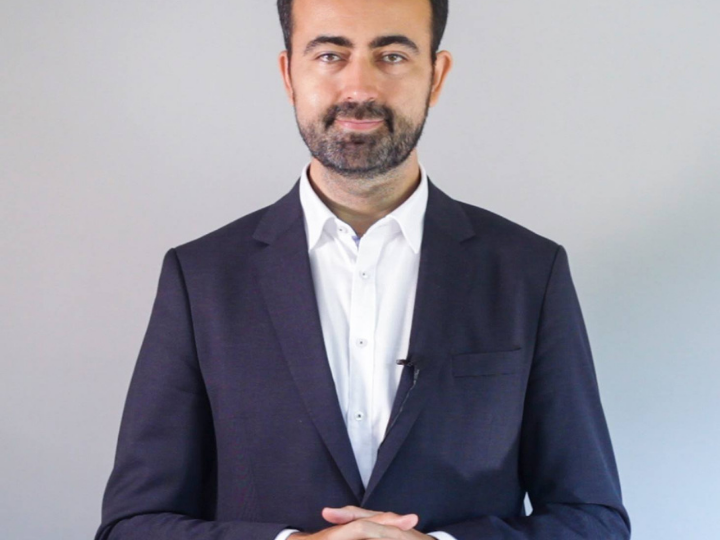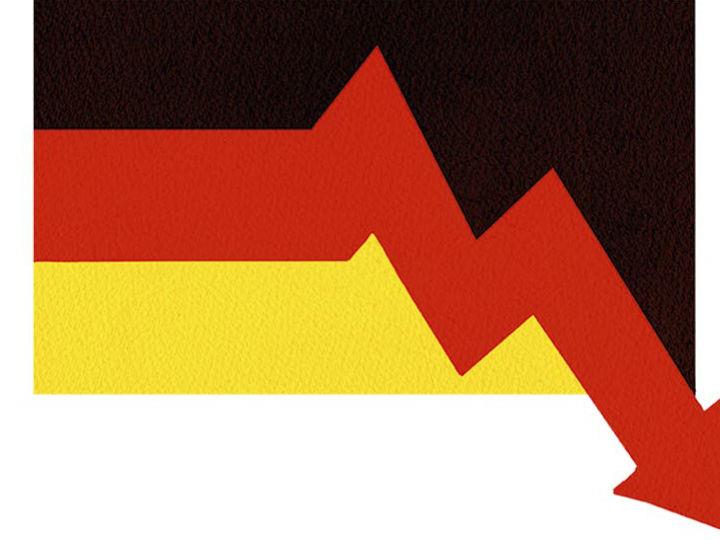by Radu Magdin
The fight or flight response is one of our most basic. Occurring primarily in the amygdala, it is well below the threshold of conscious rationalisation. Before we’re aware of it or can rationalise it, our decision has been made. It sometimes ends up defining us, even if we have little to no control over it: the soft-spoken accountant who stood-up to a gun-wielding terrorist; the would-be strong man cowering in fear.
Likewise, two important groups may soon be defined by a similar response: South America and Africa’s superclans.
The Rise of The Superclans
Generally speaking, when predominately agricultural societies undergo ‘the Great Transformation’ to a primarily urban, industrial and market-oriented society, power and wealth tend to, at least in the short term, become highly skewed towards a few - and usually along family lines. While opportunities abound, only few have the connections to size them. While the state grows, only some have the credentials to occupy key positions. While industries and communication develop, trust based in family and roots take precedence over credit ratings. So, a lot of the newly created wealth tends to accumulate to a fairly limited number of families – which may be termed superclans – who often come to dominate the country in question.
This situation has been most marked in ‘the Global South’. While institutional development usually means this process usually takes the form of an inverted J-curve effect, with inequality first rising and then levelling off, the patterns observed here are often simpler: the superclans remain in charge. This is to be expected to an extent. As Niall Ferguson notes, while North America was relatively ethnically and culturally homogeneous, newly independent Latin American countries were often heterogeneous and had only the marks of empire to bind people together: commerce and religion. The same applies to Africa’s states, sometimes drawn-up purposefully to join ethnicities in conflict with one another and stifle the same national consciousness which led to nation states in Europe, America and East Asia.
Adding to it is the simple fact that a disproportionate part of South America’s and Africa’s wealth comes from the primary sector. While countries which have pre-existing institutional development often end up distributing proceeds fairly equally, as is the case with, say, Norway, states which are still forming face the creation of patronage networks which are difficult to displace but through armed conflict. The net result is well known: coups, corruption, poorly functioning states lacking legitimacy, factionalism and populism, under-investment in human capital. In other words, palaces in front of which people beg. As Michael Miklaucic & Moses Naim note in The Centre for Complex Operations’ The Criminal State, what is often observed is that the state becomes little more than a fig-leaf over what at best would be called feudal structures and may otherwise be called criminal enterprises.
This makes South American and African superclans the deciding actors in their countries’ future in a way that Western or Asian elites can’t quite pull off.
And their decision is fairly simple: fight or flight.
The Years of Plenty
Roughly, we can see each region through the lens of its largest individual states. For South America, that is Brazil, Argentina and Mexico. For Africa, it is Nigeria, South Africa and Egypt.
For now, the regions are growing. Perhaps not equally, perhaps not in both equitable ways, but wealth is being created at a tremendous pace.
Africa’s growth champions are well known. According to PwC, in PPP USD terms Nigeria is expected to grow to being the world’s 21st largest economy by 2030 and the 14th by 2050, with South Africa edging towards the 27th place and Egypt moving from becoming the 20th largest economy by 2030 to the 15th y 2050. In absolute terms, that would imply a growth of over 400% in Nigeria’s cases, to reach USD PPP 4,348 billion, with Egypt growing only slightly slower to reach USD PPP4,333 billion over the same time period.
Looking at our South American countries, the situation is even brighter. Brazil is expected to be the world’s 5th largest economy by 2050, growing to USD PPP 7,350 billion, while Mexico’s economy is expected to tripe to reach USD PPP 6,863 billion, rising to be the 9th largest economy in the world by 2030 and its 7th by 2050.
In other words, growth will happen, and it will help make whoever is able to ride that wave of economic growth as rich as any of Asia’s, Europe’s or North America’s plutocrats.
Three Problems
However, that may mean very little for the average person and the long term is, in stark contrast, fairly bleak.
First, there’s demographics. A part of the growth projections, it needs to be kept in mind, comes from the simple fact that these countries are adding people. The hope is that that translates into more workers, savers, consumers, researchers and entrepreneurs. But that’s not a given.
The case of South America is perhaps illustrative.
While the region is expected to experience population growth to 2050, South America’s population boom has already mostly consumed itself, giving data about how it could play out in Africa. Overall, the UN estimates a population the whole of South America of 192,073,000 in 1970, almost doubling to 371,804,000 by 2005 and stabilising at about 461,853,000 by 2030 in the medium growth scenario. But the result is Brazil’s favelas, not an army of PhDs.
As the World Bank’s book ‘Latin America and the Rising South’ notes, South American GDP per capita levels remain below 30% that of its Northern neighbour, the United States. That’s not for a lack of growth: growing at about 5% during the commodity boom, and with incomes for the bottom 40% rising faster than anywhere in the world, South America not only failed to catch-up but faces a reversal of fortune.
The same dynamic applies to African countries, currently undergoing the largest sustained boom in population ever recorded.
Africa as a whole is growing in numbers faster than any state can keep control of, environment sustain, cities develop, or economies create jobs for. Using data from the UN’s medium scenario, which assumes significant falls in fertility that have so far not materialised, Africa’s population will be 1,688,321,000 by 2030, 2,489,275,00 by 2050 and 4,280127,000 by 2100. Using the constant fertility scenario, perhaps not as improbable as usually held, it would edge towards 3 billion by 2050 and surpass 12 billion by 2100. For comparison, Africa’s population was estimated as less than 365 million in 1970, hardly a time of plenty for all.
In other words, African states would need to produce housing, food, water, healthcare, sanitation, jobs, police services, air conditioners for roughly the equivalent of the population of Italy – every year, for the next 30. In the medium scenario.
Compounding the problem are the other issues for South America and Africa: the quality of growth, the volatility of growth and environmental concerns.
First, it needs to be kept in mind that a super-yacht and an apartment building with sanitation show up in GDP aggregates the same way. The projection is GDP growth, not necessarily more apartment buildings and cars. In the context of automation becoming commonplace in both the United States and China, and the path to development through industrialisation that the West and East Asia followed becoming less likely, it is unclear if the primary sector windfall will translate into secondary sector development and set in motion the creation of a middle class, tertiary-oriented economy. That growth, in other words, may very well translate into more yachts bought with proceeds from commodities, not the apartment buildings and sanitation that the country as a whole may prefer.
Secondly, while GDP projections tend to make for a smooth curve, reality may very well be a bit more jagged. As data from the World Bank’s WIND Index shows, exogenous factors such as the U.S. growth rate, commodity prices, the U.S. interest rate and the Chinese growth rate act as explanatory variables for South American, as well as African growth rates too well for comfort. That translates into a dependency on exogenous factors and thus a propensity towards a tempestuous business cycle, uneven government revenues and unstable currencies.
Third, what GDP doesn’t account for what may make a powerful impact in both South America and Africa: the environment. Already facing water scarcity and geopolitical conflicts to match, both regions will be among the worst affected by climate change. That translates to the unwelcome fact that regions which are already food insecure – which is to say often facing hunger and malnutrition – having even less arable land, while facing a whole host of problems from increased rates of malaria, water shortages, wildfires and extreme weather events.
The Choice
With that dynamic in motion, the optimal response for South America’s and Africa’s emerging superclans is straightforward: surf the wave of growth to the best of one’s ability, park most assets offshore – and take a plane out before it crashes. Unfortunately, that optional response on the part of the superclans would not be commensurate with the level of responsibility entrusted by their power. Yet, if any choose to single-handedly try to place their respective countries on a more sustainable trajectory, they will likely incur the costs of unpopular measures while the benefits would be shared alongside one’s business, and at times political, competitors. The result is a classic tragedy of the commons, where each individual’s incentive is to maximise one’s own gain at the expense of the public good.
In other words, the optimal response is flight. In this particular case, that means quite literally getting ready to be on a plane when the tide turns. To stay and fight would be regarded as foolhardy at best. Irrespective, that choice may end up defining both South America’s and Africa’s superclans, as well as their regions.




 By: N. Peter Kramer
By: N. Peter Kramer

